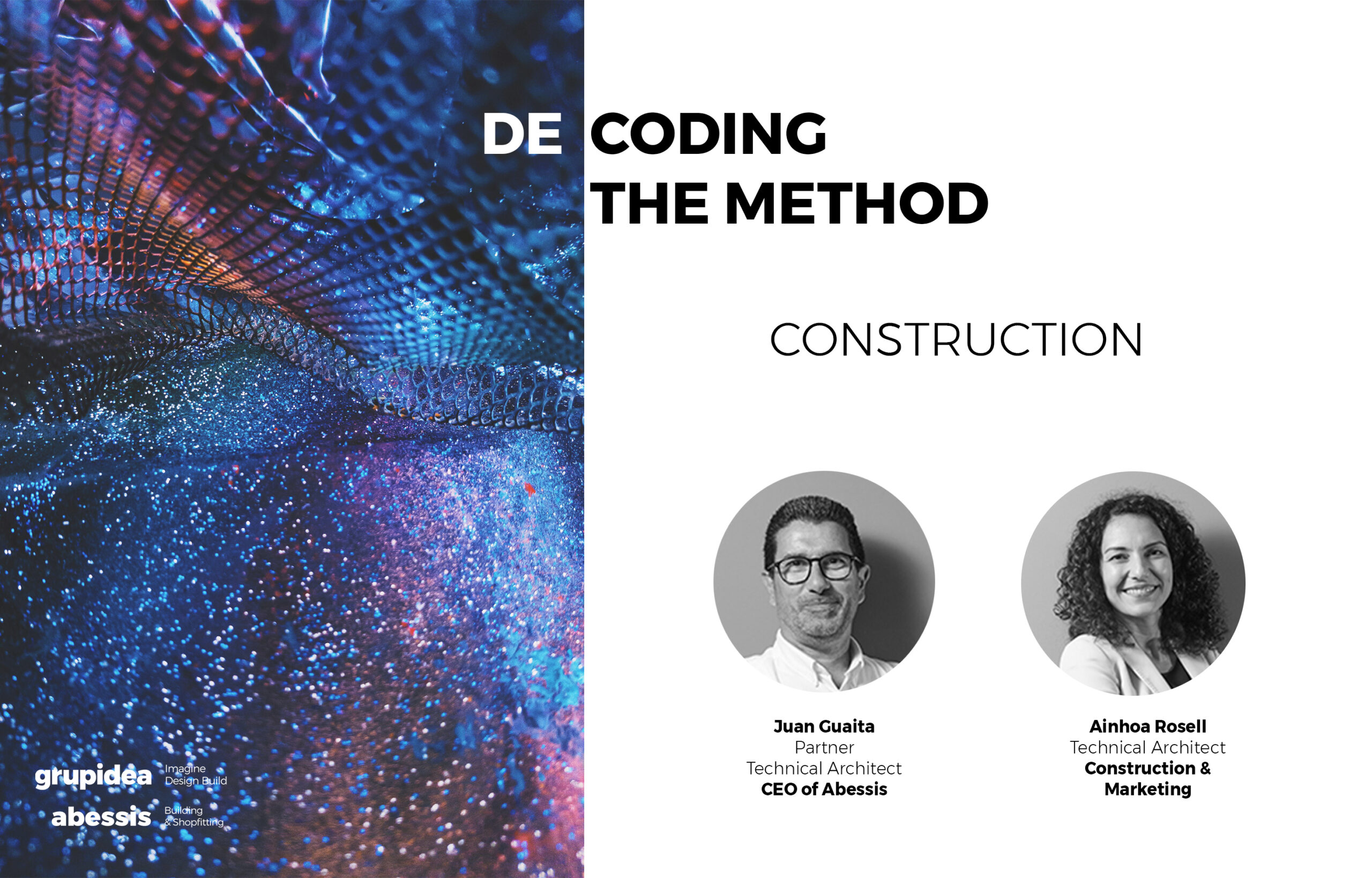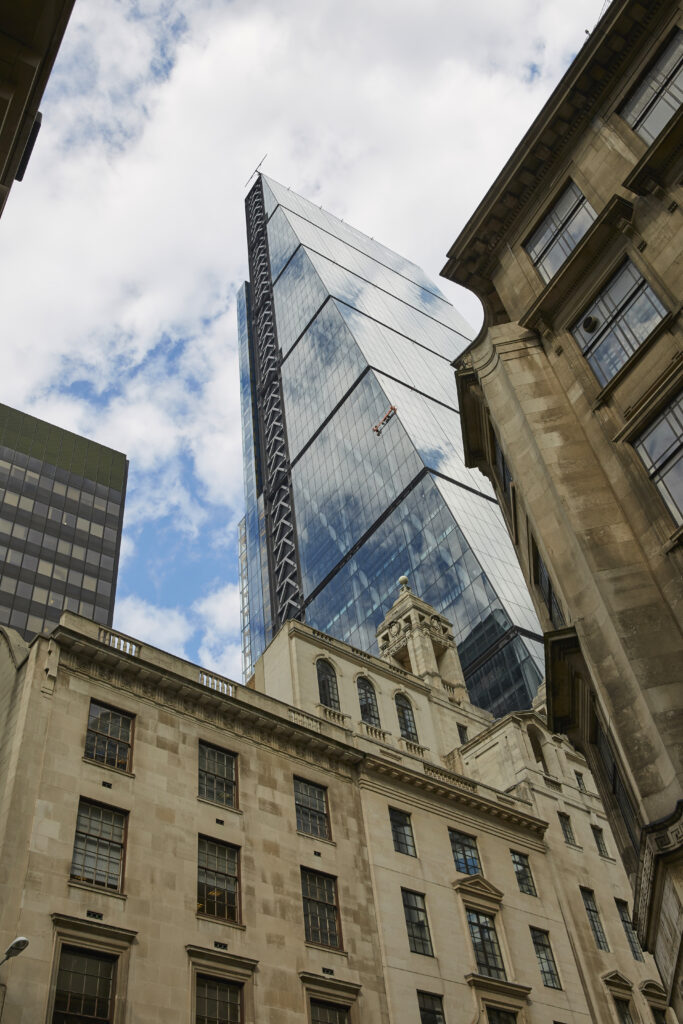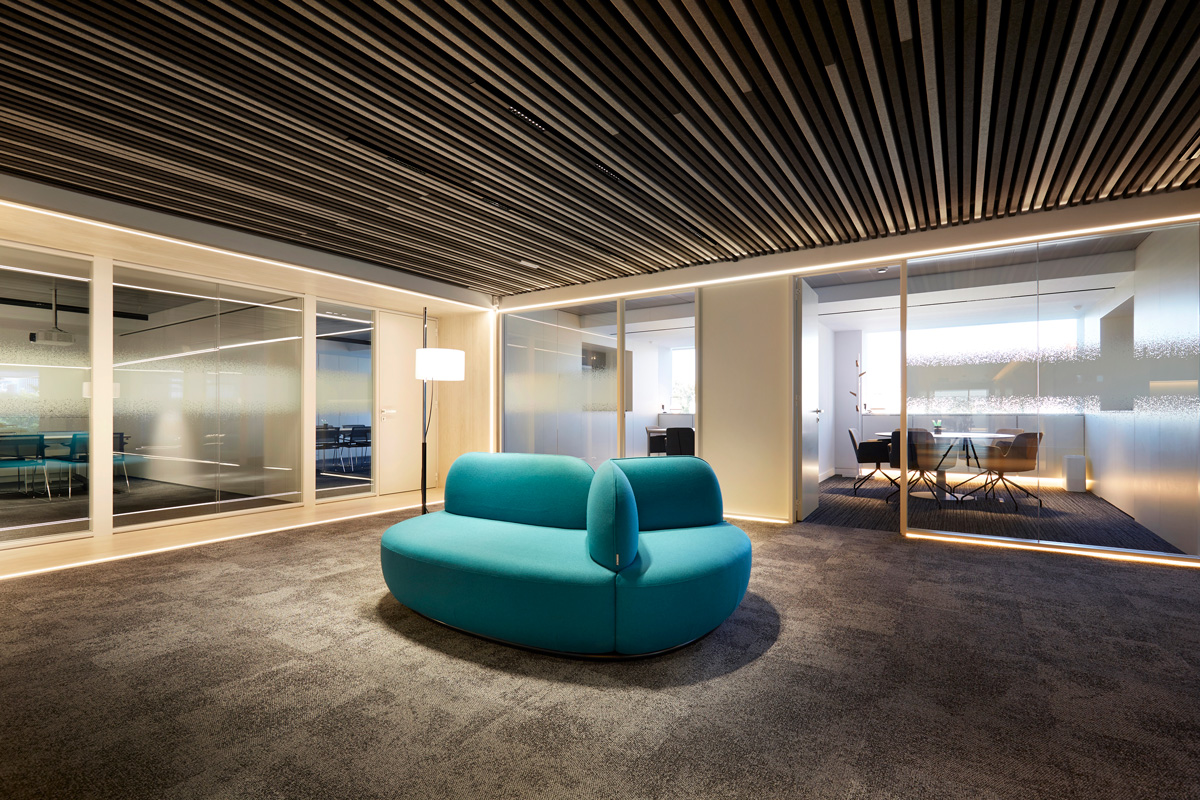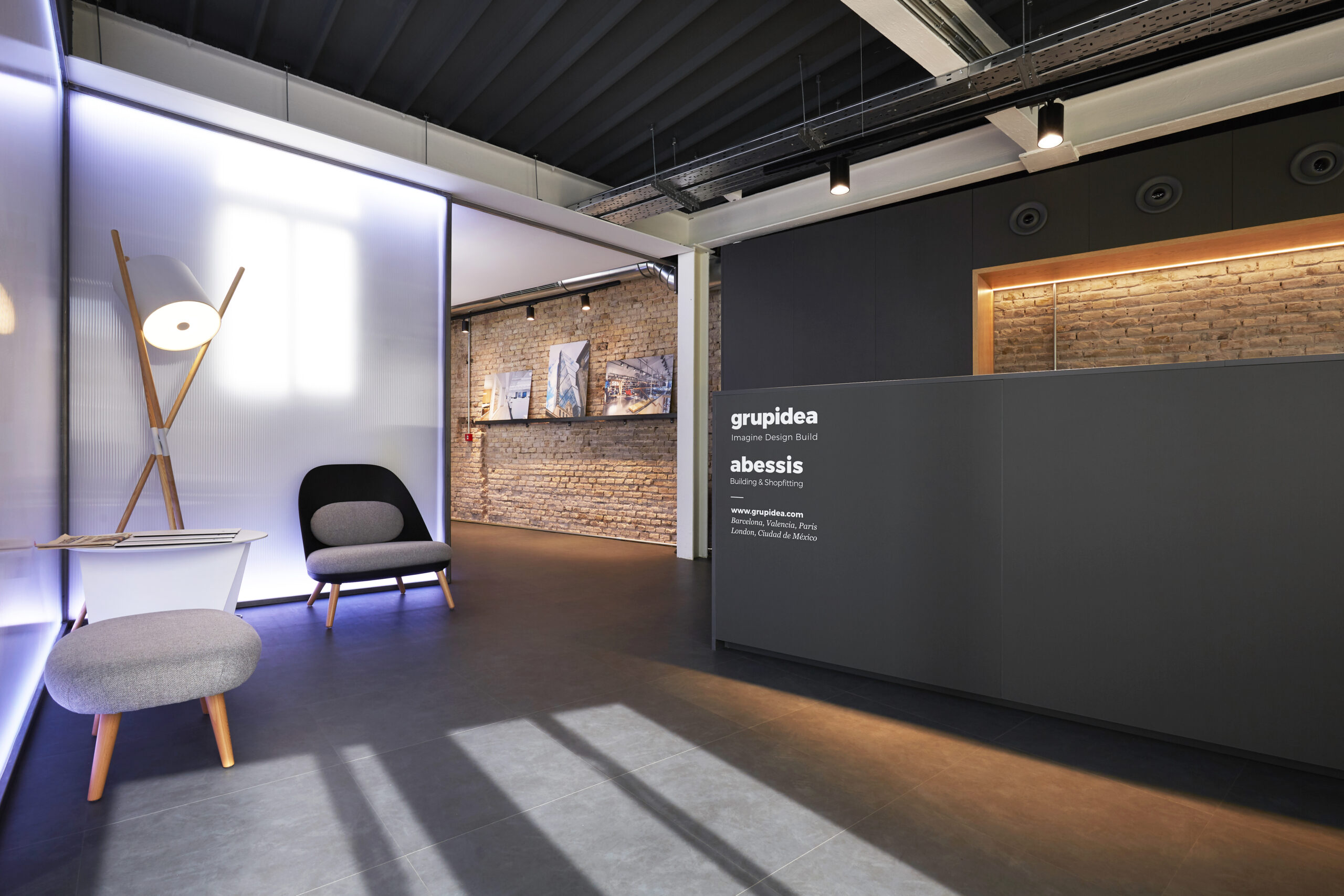Gathering, finding and seeking partners and collaborators to help drive your work strategy is fundamental to any business activity. Considering them part of your success and recognising their activity is part of any professional relationship.
Abessis, as a construction company, has shared projects with Grup Idea since its inception. In this way, it has been possible to generate joint projects, offering the entire value chain as a construction company and a professional architectural and engineering services company.
At the end of 2024 it will celebrate 25 years since its foundation.
In this interview, we have Juan Guaita, CEO of Abessis and Ainhoa Rossell, Technical Architect at Abessis, telling us their part of the story in order to understand and de-code ‘the method’.

About the company
- What were your beginnings like? @Juan, you had your own construction company and had collaborated with Grup Idea before. How did the opportunity to create Abessis arise?
(JG) I trained in Technical Architecture with a specification in building and then I have been complementing my studies by training in Business Administration and Business, always linked to my professional practice as a builder.
I had my own ‘traditional’ construction company and occasionally worked with Grup Idea. After the 2008 crisis and a three-year hiatus, I contacted them again to continue collaborating as before. A first commission arrived in Valencia for an Italian firm with the same role as always (Construction Management) and so the idea arose of taking on the role of Construction Company in a different way. A proposal that we put forward together and that we dared to try out with interesting conditions that we have now seen with the passage of time.
- Ainhoa, what were your beginnings at Abessis and how have you evolved professionally in the organisation? Also tell us about the experience of working on a project in London.
(AR) I have a degree in Technical Architecture and then I have furthered my studies with an Engineering degree in France on PLM (Product Lifecycle Management), as well as a Master’s degree in Quality Management My role in the company has changed a lot from the beginning until today. In the early years, there were only 3 of us in the technical department, doing a lot of projects, but smaller ones (except for the ones in London) and with a small group of clients.
Looking back now, I can see how much we have learned and evolved. The technical team has tripled, we have diversified and we work for many more firms. The volume of projects we deliver each year still surprises me. We achieve this thanks to having our own work methodology and knowing how to transmit it to our clients and collaborators.
Initially I was 100% dedicated to the management of works, while nowadays my work is more focused on the study and tendering of projects, as well as the relationship with clients and suppliers, always being aware of all the works that we have underway, but from a secondary perspective. My work now is less Executive and more Strategic.
When I joined the Abessis team it was primarily to reinforce the workload in France, however, the award of projects in London radically changed the plans. They were mainly two difficult, long, very demanding projects, especially because of the iconic location and the uniqueness of the building. The pace of work was frenetic and a large number of suppliers had to be managed. Despite all the complexities, I don’t think we will ever have another project like it and I am pleased that Abessis can add this milestone to its portfolio.

- How is the company’s internal organisation currently structured? How many people are there? What profiles?
(JG) We are a very ‘horizontal’ company with continuous and very intertwined communication between all the people who make up Abessis. You could say that we have two main departments: administration and technical. Profiles? One person with a law degree, two administrative staff, an industrial engineer and the rest of us are technical architects and site managers.
(AR) On this question we perhaps disagree a little, for me it is not so important, neither is the original formation of each person, nor do I believe that we are so horizontal. There are indeed two clearly differentiated blocks that depend on a single management, but within them we also have our own sub-organisation.
In administration, there is an exclusively financial and accounting part and a part that is closer to the works themselves, which we could call ‘procedures’. This includes Health and Safety at the documentary level, Social Security procedures and the supervision of the Quality and Environmental Systems that we have in place.
On the other hand, within the Technical Department, we develop a main function which is the execution of the works as such, but there is also a previous phase, which we could call ‘studies’, which is responsible for participating in tender processes so that we can always ensure the continuity of the work afterwards.
In this small part, many more things are done, such as the approval processes for the new brands we want to work for, the renewal and loyalty of our supplier portfolio, as well as commercial management with a view to attracting potential clients.
Focusing on the works side, which in the end is the ‘engine’ of Abessis, we are fortunate that, as a relatively small team with a lot of communication between us, it is still a collaboration. In this way we are very transversal. The fluid internal communication allows us to grow in knowledge and speed of action.
As Juan comments in a later question, when there is an expansion process, we try to repeat the team, so that the client feels more comfortable and accompanied by the same PM and the previous experience with the brand is an added value. What we do in these cases is to organise ourselves in the form of small work teams, so that a technician who is dealing with a brand for the first time will be supervised by someone who has previously done this work.
This same system is also used for the integration of new team members, where their first projects are always within a small working group or supervised by another PM with more experience, who develops a role that could be defined as team leader. That is why, within this horizontality that exists in our organisation chart, certain verticalities are indirectly established to control and ensure that everything flows correctly until each member of the team achieves their own autonomy, not only in the company, but also in the knowledge of each client.
- How do you set up the different project teams and what are the benefits of this working method?
(JG) We are a very flexible company; one of our strong points is our ability to adapt to the circumstances of the moment without ever losing the way we do things. We achieve this, for example, with a very close relationship between all the people who make up Abessis. Being present in person is vital so that this contact, the cross-cutting nature of what we do, reaches everyone. Everyone knows, in their own way, what everyone else is doing.
- From the inside, how do you assess the evolution of Grup Idea/Abessis over the last 25 years?
(JG) Many things have been achieved, but more will be achieved. Society is changing and we as companies must adapt to these changes. Our collaboration and synergies must therefore evolve accordingly. Constant change and transformation have been and will continue to be key characteristics of both Abessis and Grup Idea.
(AR) I can’t talk about the evolution of the group over the last 25 years, but I have experienced Abessis’ evolution over the last 10 years from the inside.
I think the company has grown exponentially, both in terms of the team and the diversification of clients. A couple of very obvious examples are both our change of offices in 2019 due to the constant expansion of the technical department, as well as the average surface area of the projects we carry out.
The new offices were necessary both to work more efficiently and to have a clearly corporate space that would allow us to make ourselves known through events, as well as to meet with our clients and collaborators. It was a good example of transversal work from the definition and design of the space to its construction. These commissions in which you are your own client are usually the most complicated jobs.
- From your point of view, what do clients value most about Abessis’ services?
(JG) We are always ‘there’, the customer finds us when he needs us. And as I said before, our ability to adapt. We never fail or disappear.
(AR) There are comments that are repeated a lot in our customer satisfaction surveys, which is very gratifying because it shows that ‘something’ is being done well. They generally praise the flexibility, such as the ability to adapt to changes, which is essential in the retail sector where we are used to constant changes in design, dates, etc. They are also always grateful for the dialogue with the PMs and their ability to find solutions.
- What makes Abessis different from a ‘traditional’ construction company and from construction companies specialising in new buildings?
(JG) We take things very seriously. We work for the end client, who is not in the construction or development business, but is selling something in the spaces that we build for them. A traditional construction company relies heavily, if not solely, on price. Moreover, what he builds for his client is for a third party. Although you might think that there are no major differences, they are totally different worlds.
(AR) This sector is characterised by the speed of its projects, we experience complete cycles in very short timeframes, so the process has to be very well tied up.
An oft-repeated phrase is that ‘everything is for yesterday’, we know that every day that can be brought forward is a day that the client stops paying rent and can start up their business. That is why internalising this need and making every effort to try to do everything possible is something that differentiates both Abessis and its suppliers from what we could understand as a ‘traditional’ construction company.
- And what do you think the client values about the tandem with Grup Idea?
(JG) As I said before, our clients need us to build ‘corporate sales spaces’ for their products or services and, when our work is done, they move on to what really occupies them. So in the project + construction phase, what they want is a solution that doesn’t cause them any problems or distract them from their real business. We are solution facilitators and we take the worry away from the client.
The fact of being able to concentrate the whole process in two companies that come together as a group and seek to complement each other to work as a single interlocutor, is possibly one of the factors that more than one client values positively.
Hence the concept of ‘Design & Build’ or ‘Turnkey’. Thanks to this, the client can look to us to carry out the entire value chain, as happened with the Bank Degroof Petercam project in Madrid.
We did it together with Grup Idea where they started the project in the design phase by conducting interviews and preparing conceptual sketches to transform them into layouts. From there, we made an indicative cost proposal that allowed us to close the order.
Once the proposal was accepted, we moved on to the Design and Implementation phase of this project, carrying out the Architectural and Engineering services. From there, we moved on to the Construction phase, where Abessis became fully involved in the project.
(AR) In addition to Juan’s point that our services are a necessary ‘formality’ for developing your real business and having the whole process unified, there are other aspects that are also highly valued.
There are clients who order the complete package from us from the beginning, which saves them, for example, the tendering process, which in the end means time and, as I mentioned before, days that delay the opening date of their business.
It is also obvious that participating jointly from the beginning has many synergies, the construction part can provide solutions already in the design or drafting phase of the project, generally focused on reducing costs and delivery times.
Another point to highlight is that, by hosting the entire process, the coverage is total, there are no ‘gaps’ that can arise when they are separate companies, of ‘tasks that remain in no man’s land’.
But undoubtedly, the simplicity in the interlocution, always working with the same team, provides a human value that is highly appreciated by clients.

- Why was it decided to have two distinct brands but with a common visual identity?
(JG) To broaden the range of services and to allow the customer to decide whether they want to contract one part or all of the type of service we can offer them; we again offer flexibility.

On construction services
- What is a Project Manager for you, is it the same as a PM in Grup Idea and a Construction Manager?
(JG) They are acronyms or words normally imported from the Anglo-Saxon world, but I end up liking the Spanish ones better: encargado, jefe de obra, arquitecto técnico, etc. After this clarification, I would like to say that the profiles are very different, because although we may coincide in our studies or university degrees, the development of the work is complementary but very different: some work more in the preliminary phase and/or in the office, while we are much more in the construction phase and on site. You could say that our fundamental part begins when theirs ends, although we all do it from start to finish.
(AR) If we had to associate you with a single word, it would be a ‘manager’, in the end it is a person who manages resources: money (a construction budget), time (a schedule) and manpower (each of the trades).
I would not make a distinction between the two terms, in the end, they are nothing more than project managers in each of the phases. There is a PM in the project drafting phase, who can continue during the execution phase as part of what in Spain is known as Project Management, which in this sector is called Project Management. In turn, the PM of the construction company is what has always been understood as part of the FD, being the most responsible for the execution.
- Have you ever commented that a PM is, above all, a ‘resource manager’? What does it mean for the client to have a figure like this in his or her work?
(JG) Without a doubt, he is a resource manager. Companies like ours develop a job based on coordinating all those involved in a timely manner, which in retail is not at all easy. The client forgets about the problems and can prepare his ‘landing’, just the day we finish, they start, and in many cases we even overlap.
(AR) Indeed, in fact, I had already used this definition in the previous point. In answer to the question I would say comfort, the objective is that the client has a single interlocutor, so in addition to guaranteeing that there is no loss of information, it gives him/her added confidence, he/she knows that someone is ‘controlling, supervising, managing, etc.’ the entire project.
- And especially in the case of brands with expansion projects, what are the benefits of having this figure?
(JG) Well, we offer the same service for a single project as for an expansion, perhaps the difference is that Abessis ensures that there are no changes in the technicians we assign to our clients, establishing a relationship of trust and knowledge that benefits both parties.
(AR) Expansion processes are repetitive projects, each one with its own singularities, obviously, but it simplifies the work for a brand that the Project Manager knows its business image, expectations, etc. perfectly. In the end, with a manual / concept book, plus the experience of a first project, a sequence begins in which the objective is to optimise the process, the client shows everything he/she wants only the first time, then it is that PM who will be in charge of reproducing it or teaching it to other PMs in the company.
- Abessis was created later than Grup Idea and is the key piece that completes what our clients need. Abessis is the piece where the path from DESIGN to BUILD can be completed. What is the ‘DESIGN & BUILD’ concept for you?
(JG) As I said before, it allows us to offer in the same ‘pack’ what other competitors do separately. There are many companies that design, many that build and there are also global offers like ours, we are not exclusive, far from it. The inner workings of this symbiosis and the result that customers receive from it is what should make the difference.
- Many foreign clients do not fully understand why implementation and construction work is carried out under two different brands. In your opinion, what differential value does the Design & Build formula of Grup Idea and Abessis provide?
(JG) If you manage to reach the client, the advantage is to function as a single entity, so that the client sees his interlocutor as a unit and sees that the process is simplified for him. Abroad, the role of the construction company covers more of the project as a whole than in Spain, so when they arrive here and see that the construction company does not appear until practically the last phase, they are surprised.
(AR) The separation of the two brands, if I am not mistaken, was originally due to a legal issue, as in Spain it is necessary to differentiate the work of an engineering company from that of a construction company for tax purposes. In other places, this does not happen and it is understood that the same team can design and build. It is true that, nowadays, there are advantages such as, for example, that the client can have one interlocutor in the project phase and another in the construction phase, in the end it is a guarantee that the person providing the information is always the person who is an expert in that field.
Through many of the American brands we work for and our experience in France, we know that in the USA and in most European countries they work with what is called the ‘General Contractor’.
The tasks are the same, except that the executive project and other tasks typical of a pre-construction phase are included in the construction company’s own tender. In fact, it is very common for projects to come with no measurements, or with a very brief ‘Bill of Quantities’, and for the plans to be conceptual, little more than a ‘layout’. The development of these plans, what we would call here an executive project, is already implicit in the work of the construction company.
That’s why they don’t quite understand this format. I would say that the main advantage is that each member of the team is specialised in one area: knowledge of regulations, processing licences or experience in the execution of works, for example, so they will always have the most reliable information possible, and they will always turn to one team or another depending on the stage of the project.
(JG) What we can say is that both Grup Idea and Abessis share the vision of helping and adapting to our clients at all times. And this unites us.
